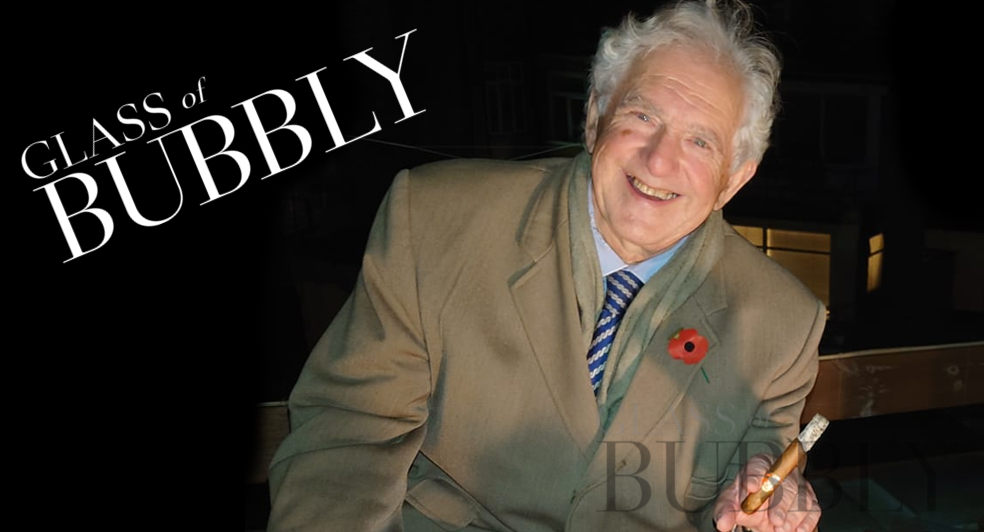A rant about Glass(es) of Bubbly – Christopher Burr MW
13th March 2024

When I was invited to write a piece for Glass of Bubbly, I thought carefully about what I could write, as clearly readers will know a lot about the subject, probably experts, so I didn’t wish to write something bland or lacking innovation or insight.
I love sparkling wines and they certainly come into my “Desert Island” must have selection. I have been privileged during my career to work with a number of excellent sparkling wines, Boizel, Krug, Ruinart, Bollinger and de Venoges from Champagne, and Zonin from Prosecco and other “method” Italian wines. More recently I have planted two English Vineyards, and have huge enthusiasm and respect for the progress being made with our own Country’s sparkling wines.
Being passionate about the subject, should I write about “the beauty of the blend”, the artistry of blending different grapes, different vineyard sites, use of reserve wines etc.. Particularly at a time when monopole site wines are becoming so interesting and being promoted?
Or should I write about sparkling wines made with the secondary fermentation not taking place in bottle, which would surprise by their quality? Or maybe my passion for sparkling wines which have had the benefit of long ageing, either on yeast lees, or simply post disgorged bottle ageing? But no, taking the great name of the business, “Glass of Bubbly”, I have decided to write about my passion for serving the right wine in the right glass, and sparkling wines almost more than any other need the correct glass to show off its best.
My first memories of tasting Champagne go back to when I was seven. My father had met Victor Lanson during the war, they became friends and one year we were invited to visit the Lanson cellars and were shown the various parts of a new blend they were proposing to call Black Label. I now know we were being shown the still “vins clairs” wines, then subsequently the final blend, then the wine following secondary fermentation in bottle. A fascinating experience I could never forget.
The glasses used were similar to the ISO standard tasting glass but a bit bigger, they certainly allowed the aromas and flavours of the individual wines to show. I remember the glass, because at home, Father and my Grandfather always served a glass of Champagne before lunch on Sunday, from a coupe, beautiful glasses handed down from earlier generations.
Interestingly, my Grandmother always commented that she liked these glasses, not only for their elegance, but for young Champagne it “mellowed down” the bubbles which she preferred. Funnily enough, for very young Champagne, I still often use the Coupe for the same reason, and you can also appreciate the nose well from such a beautiful glass.
Of course it is well recorded that the Empress Marie Antoinette famously invited the Royal glass maker to fashion a glass for Champagne modelled on her left breast, partly to fulfil the King’s fantasy, and partly so the Court could toast to her good health! Interestingly, although other glass shapes, but especially the coupe, have gone in and out of fashion, they were very popular in the 1920’s and 30’s, also at a time when top Parisienne sommeliers would often decant a young Champagne, not only to allow the wine to “breath” but also tone down the bubbles.
Britain in the 17th Century became a great centre for glass making and innovation, with the famous Vauxhall and Whitefriars glass works creating not only fine wine glasses, but also glass bottles for wine. It is in the early 18th Century that the flute was created as a glass shape, which not only preserved the bubbles which made the wine special, but one could see the slow beading trickle of bubbles from the bottom of the glass.

Post second world war, there has been a strong revival of the Flute and Trumpet shapes, (nothing to do with musicality), but promoted by various Champagne and other sparkling wine makers, for the attributes of showing and retaining the bubbles for as long as possible.
This is where I start my rant! I have to say that I positively hate the Flute and Trumpet shapes. It is impossible to appreciate the complexity and interest on the nose from those glasses, and after all, I would argue that 60% of wine’s enjoyment is from the aromas, particularly with sparkling wines which have a sense of place, have complexity, and have brioche-like lees contact aromas. I also like to see a sparkling wine evolve, with different aspects appearing as the fizz subsides a bit.
The only time I would every contemplate using a flute, (and I have a cupboard full!), would be for an old wine, which is really loosing fizz. Fortunately most Champagne Houses and other sparkling wine makers have moved on to use a tulip shape glass, which is a sort of compromise, allowing aromas to emerge and be captured, and still retaining bubbles. This is a huge step forward, and for me the “fatter” the shape of tulip the better.
But for the most part, I generally ask for my sparkling wine to be served in a fine white wine glass, from which I get everything. I urge you to experiment with your glass-ware for sparkling wine, you will be fascinated by how different the wines can taste.
Rant over.
On to my next Glass of Bubbly…
Find out more about working with Christopher Burr MW via his very own website with his services including after dinner speaking, wine valuations, wine education courses and masterclasses.
![]()
Christopher Burr MW
Christopher has been involved in the wine business for over 45 years and has been a Master of Wine since 1995. Previously he was Head of Wine Sales at Christies Auction House London and helped import such great Houses as Krug and Bollinger.
